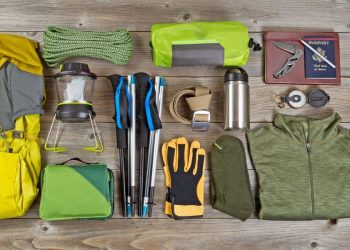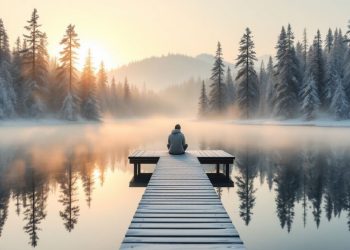The weathered wooden walls of Sweden’s mountain stations stand as silent witnesses to generations of hikers and skiers. They tell stories of people seeking the mountains’ tranquility and pure air. When the Swedish Tourist Association (STF) announced changes in the operation of their mountain stations in December 2023, it was more than just an administrative decision – it marked a new chapter in Swedish mountain tourism history.
From January 1, 2024, iconic stations like Blåhammaren, Sylarna, and Helags would operate under new conditions. This served as a reminder of how our way of experiencing the mountains constantly evolves, from the first pioneers who marked out the trails to today’s modern visitors who demand more services and may not be entirely clear about what can and cannot be done in these sensitive natural areas.
When STF began establishing these stations in the late 1800s, it was with a vision of making the mountains accessible to everyone. They didn’t just build shelters – they created meeting places where hikers could share stories by the firelight. A day’s journey on skis between stations was more than just travel – it was a journey through a landscape where time seemed to stand still.
The Evolution of Winter Tourism in Sweden
Today’s winter tourism in Sweden offers a unique blend of tradition and sustainable innovation. While some destinations have grown significantly, others have maintained their original character, allowing visitors to experience authentic Swedish winter life. According to Nordic Visitor, this diversity enables travelers to choose experiences that match their preferences, from adventures in pristine wilderness to comfortable mountain stays.
Åre: Balancing Growth with Heritage
The story of Åre reflects both the challenges and successes of sustainable mountain tourism in Sweden. This charming mountain village in Jämtland has managed to preserve much of its traditional character despite significant growth. At the heart of Åre village stands the medieval stone church and its peaceful cemetery, testifying to the village’s deep historical roots. Dating back to 1162, the church continues to offer a serene contrast to the vibrant tourism surrounding it. Here, pilgrims walking St. Olavsleden – the world’s northernmost pilgrimage route – take a meaningful pause on their journey, connecting with centuries of spiritual travelers who came before them. The church and cemetery offer both visitors and locals a place for reflection and connection to the village’s heritage. From this historic centerpiece, the village spreads outward with its historic wooden buildings, cozy cafés, and local shops, proving that growth and authenticity can coexist.
As one of the first destinations in Sweden to implement Global Sustainable Tourism Council (GSTC) criteria, Åre demonstrates how traditional mountain communities can embrace sustainable tourism while preserving their cultural heritage. Local guides share stories passed down through generations, while restaurants serve dishes made from locally-sourced ingredients, creating an authentic mountain experience.
Beyond the Beaten Path: Sweden’s Hidden Winter Gems
Västerbotten: Where Tradition Meets Sustainability
In the heart of northern Sweden, Västerbotten pioneers sustainable tourism through its innovative Västerbotten Experience certification program. Based on Global Sustainable Tourism Council criteria, this certification ensures tourism supports local communities while protecting natural environments. Here, visitors discover authentic Swedish winter traditions, from ancient Sami culture to traditional mountain hospitality.
Kittelfjäll: A Model for Sustainable Mountain Tourism
Nestled in southern Lapland’s dramatic landscape, Kittelfjäll exemplifies the principles of Västerbotten Experience. A former STF hotel until the 1970s, it’s now an intimate ski resort combining world-class skiing with environmental responsibility, creating experiences that respect both nature and local culture. Traditional mountain hospitality seamlessly blends with environmentally conscious operations, while guided tours emphasize environmental education and cultural preservation.
Riksgränsen: Where the Arctic Meets Adventure
At the edge of Swedish Arctic, Riksgränsen writes its own rules for winter tourism. Here, when spring arrives in southern Sweden, the ski season reaches its peak. Visitors can ski through pristine snow under the midnight sun in May or pause their evening ski tour to watch the Northern Lights dance across the sky. Local guides, many raised in these mountains, share generations of knowledge about surviving and thriving in the Arctic wilderness.
Embracing Nordic Skiing Heritage at Sweden’s Traditional Winter Paradises
While downhill skiing often makes headlines, Sweden’s true winter soul lies in its cross-country skiing traditions. Across the country, smaller destinations offer authentic experiences that connect visitors with both nature and cultural heritage.
Grövelsjön: A Cross-Country Skiing Paradise
At the border between Dalarna and Norway, Grövelsjön represents the essence of Nordic ski culture. Here, well-maintained cross-country tracks wind through ancient mountain birch forests and across untouched mountain landscapes. The area’s commitment to low-impact tourism means visitors can experience genuine wilderness while staying at traditional mountain stations. Local guides share their deep connection to the landscape through ski tours and wildlife tracking.
The Storulvån-Sylarna-Blåhammaren Triangle
In Jämtland’s mountains, this classic ski route connects three mountain stations and offers an authentic experience of Swedish winter traditions. The Swedish Tourist Association operates these stations with a strong focus on sustainability, serving locally-produced food and running operations with minimal environmental impact. Visitors can ski between stations during the day and spend evenings learning about mountain culture, sharing stories with fellow travelers, and experiencing the unique atmosphere of Swedish mountain hospitality.
Jokkmokk’s Winter Trails
Beyond its famous winter market, Jokkmokk offers exceptional cross-country skiing experiences with strong connections to Sami culture. Local guides lead ski tours that combine winter skills with cultural learning and provide insights into traditional Arctic ways of life. The area’s commitment to sustainable tourism ensures these experiences support both environmental conservation and the preservation of indigenous culture.
Modern Adventures Meet Traditional Activities
The development of winter activities in Sweden reflects a fine balance between innovation and tradition. Recent years have seen both the revival of ancient winter practices and the introduction of environmentally friendly modern alternatives.
The Electric Revolution in the Wilderness
Swedish mountain destinations are taking important steps toward sustainable motorized activities. SkiStar leads the development through its electrification strategy, progressively replacing fossil fuel-driven vehicles with electric alternatives. This includes both snow groomers, snowmobiles, and other work vehicles. At several of SkiStar’s destinations, visitors can now experience how modern technology contributes to a quieter and more environmentally friendly mountain environment while maintaining operational efficiency. This silent revolution in the mountains demonstrates how adventure and environmental responsibility can go hand in hand.
The Rise of Snowshoeing
While snowshoes have ancient roots in North American indigenous culture, they’re a relatively new addition to Sweden’s winter activity repertoire. Over the past decade, this accessible winter sport has gained popularity and offers visitors an easy entry point to wilderness winter experiences. Unlike traditional cross-country skiing, snowshoeing requires minimal training, making it perfect for families and beginners eager to explore Sweden’s snow-covered forests and mountains.
Traditional Dog Sledding Experiences
Dog sledding remains one of Sweden’s most sought-after winter experiences, with many responsible operators offering everything from short trips to multi-day expeditions. Many kennels now emphasize animal welfare and sustainable practices, ensuring this traditional activity maintains its place in modern winter tourism. Visitors can learn about the special relationship between mushers and their dogs and understand the significance of this historical mode of winter transportation while experiencing the thrill of gliding through snow-covered landscapes.
Looking Forward: The Future of Sustainable Winter Tourism
As climate change continues to impact traditional Alpine skiing destinations, Sweden’s commitment to sustainable winter tourism becomes increasingly important. New research suggests that while Swedish ski areas may become increasingly important for European winter tourism, the path forward requires careful consideration of sustainability, overtourism, and authentic experiences.
The future of Swedish winter tourism lies not in creating more large-scale ski resorts, but in preserving and promoting the authentic winter experiences that make Sweden unique. This approach emphasizes the protection of natural environments, preservation of local cultures and traditions, support for local communities, and creation of meaningful visitor experiences.
Bibliography:
Visit Sweden. “Winter Activities in Sweden.” 2024, https://visitsweden.com/what-to-do/nature-outdoors/winter-activities/?utm_source=chatgpt.com
Ski Resort Info. “Environmentally Friendly Ski Resorts in Sweden.” 2024, https://www.skiresort.info/best-ski-resorts/sweden/sorted/environmentally-friendly/?utm_source=chatgpt.com
SkiStar. “Fossil-Free Ski Resort.” 2024, https://www.skistar.com/en/sustainability/Fossil-free-ski-resort/?utm_source=chatgpt.com
SkiStar. “Electrification.” 2024, https://www.skistar.com/sv/hallbarhet/elektrifiering/
Save Our Snow. “Swedish Ski Area Operating Fossil Fuel Free.” January 31, 2024, https://saveoursnow.com/2024/01/31/swedish-ski-area-operating-fossil-fuel-free/?utm_source=chatgpt.com
SNO. “Green & Eco Ski Resorts.” 2024, https://www.sno.co.uk/ski-resort/green-eco-ski-resorts/?utm_source=chatgpt.com
Ski Solutions. “Low Carbon Ski Holidays.” 2024, https://www.skisolutions.com/low-carbon-ski-holidays/sustainable-resorts?utm_source=chatgpt.com
The Green Voyage. “15 Sustainable Winter Escapes.” 2024, https://thegreenvoyage.com/sv/15-sustainable-winter-escapes-exploring-natures-cold-weather-wonders-2024/?utm_source=chatgpt.com
Misfit Wanders. “Skiing Sweden.” 2024, https://misfitwanders.com/skiing-sweden/?utm_source=chatgpt.com
Nordic Visitor. “Sweden Winter Guide.” 2024, https://www.nordicvisitor.com/blog/sweden-winter-guide-what-do-where-go/
Campervan Sweden. “Winter Activities.” 2024, https://www.campervansweden.com/blog/things-to-do/winter
Trip Jive. “Eco-friendly Winter Travel Tips.” 2024, https://tripjive.com/eco-friendly-winter-travel-tips-for-sweden/
Misfit Wanders. “Winter Holiday Sweden.” 2024, https://misfitwanders.com/winter-holiday-sweden/
Sweet Sweden. “Top 10 Winter Activities.” 2024, https://www.sweetsweden.com/tourism-travel-sweden/top-10-winter-activities-in-sweden/
Swedish Adventures. “Winter.” 2024, https://www.swedishadventures.se/en/winter







 STS
STS






